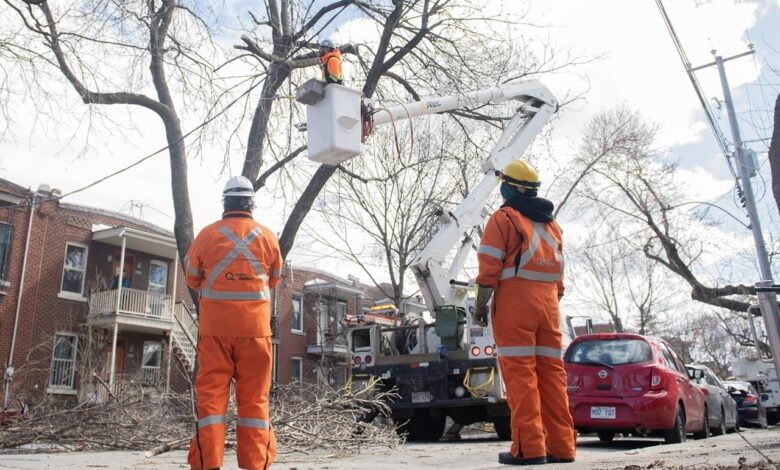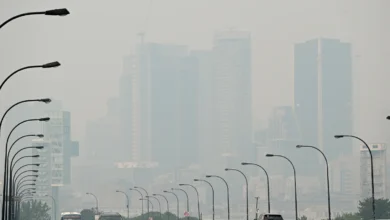Hydro-Québec, the largest electricity producer in Canada, needs to take swift and effective measures to prevent another mass outage, given the devastating consequences such events can have on public health, economic stability, and social well-being. To that end, the following recommendations can be implemented.
Hydro-Québec could invest more in upgrading and modernizing its infrastructure to improve its reliability and resilience against extreme weather events, technical failures, or cyberattacks. This could involve replacing aging equipment, enhancing monitoring systems, and implementing smart grid technologies that can detect and respond to outages faster. Additionally, the company could explore alternative sources of energy, such as renewable energy, to reduce its reliance on a single transmission system and diversify its portfolio for greater flexibility.
Hydro-Québec could improve its communication and cooperation with the public, government agencies, and other stakeholders during power outages. This could include providing timely and accurate information about the extent and duration of outages, the causes, and expected repairs, and the safety measures and resources available for affected communities. The company could also establish better coordination mechanisms with emergency management personnel, hospitals, shelters, and other critical facilities to ensure that they have reliable backup power and can prioritize their needs.
Hydro-Québec could conduct more frequent and rigorous maintenance checks and safety inspections on its equipment and facilities, especially those that are particularly vulnerable or critical for the power grid. This could involve using advanced analytics and predictive maintenance technologies to detect and prevent potential failures before they occur. Furthermore, the company could encourage its customers to adopt energy-efficient practices and install backup generators or solar panels to reduce their dependence on the grid and ensure their own resilience.
Hydro-Québec could invest in human capital development to ensure its workforce has the necessary skills and knowledge to operate, maintain, and innovate the power grid of tomorrow. This could include promoting diversity and inclusion, fostering a culture of continuous learning and improvement, and attracting and retaining talented professionals from different sectors, such as engineering, data analytics, cybersecurity, and customer service.
Power outages can be a major inconvenience for people across the world, especially during extreme weather events. In Quebec, Hydro-Québec is the primary provider of electricity to millions of homes and businesses, and they have implemented various strategies to respond to power outages as efficiently and quickly as possible.
Hydro-Québec relies on multiple platforms, including its website, Twitter account, and phone line, to stay connected to customers and keep them informed about outages. The Power Outage Tracker Canada website provides updated information on outages province-wise, and the Hydro-Québec website offers a service status report by region that indicates the number of customers without power. Customers can also report outages online or by calling Hydro-Québec’s customer service number.
Hydro-Québec prioritizes outages based on the level of risk to public safety. Hospitals and other emergency services are critical services where power needs to be restored on a priority basis. Hydro-Québec conducts investigations to identify the reasons behind power outages and works to prevent future outages by improving its aging infrastructure, trimming trees, and removing trees that could pose a threat to power lines.
Given the frequency and impact of extreme weather events, the need to address climate change concerns is essential. Hydro-Québec acknowledges that its aging infrastructure remains vulnerable to natural disasters such as freezing rain, high winds, and lightning. As a result, Hydro-Québec has released a climate change adaptation plan to deal with these challenges proactively. This would help to manage the risks from future extreme weather events and reduce the consequences of power outages.
Furthermore, Hydro-Québec has constantly been investing in the development, maintenance, and modernization of its infrastructure to improve its reliability and resiliency against outages. The company has also been exploring alternative sources of energy such as renewable energy, to diversify its portfolio and reduce dependency on a single transmission system. Novel technologies and advanced analytics are being used to detect and respond to outages faster. This proactive approach not only reduces the frequency of power outages but also ensures that the duration of power outages is minimized.
Hydro-Québec has been taking a comprehensive approach in its response to power outages. From investing in infrastructure and exploring alternative sources of energy to prioritizing risk management and modernization of technology, Hydro-Québec has demonstrated its commitment to providing reliable and affordable energy to its customers. The company’s approach not only helps to minimize the inconvenience of outages for consumers, but it also ensures safety and reliability, even during natural disasters.
Here are some ways that Quebec can minimize power outages:
- Maintenance work: Hydro-Quebec performs maintenance work to keep the power system in good condition and ensure its reliability. To do the work safely, they sometimes have to cut the power supply. This is called a planned service interruption. Rest assured that these interruptions are always included on the map of scheduled interruptions and they inform the affected customers in advance.
- Trimming trees: Hydro-Quebec cuts branches that are too close to power lines to protect the power system and limit the number of outages. One way to ensure the reliability of the electrical distribution network would be to remove trees from nearby Hydro-Québec wires in general.
- Burying wires: One way to prevent a future ice storm from damaging electrical wires and breaking distribution poles is to put the infrastructure underground. However, burying wires is too costly.
- Acting with urgency: Experts say Hydro-Quebec must act with urgency on the aging network to lower outage risks and make the system more resilient.
- Reducing energy consumption: Quebec’s ideas to reduce residential energy consumption could backfire. Reducing heating levels outside “rush hours” could mean a demand spike at the very times of day when the idea is to reduce consumption.
- Improving the electrical grid: Experts say that Quebec’s electrical grid needs to be improved to make it more resilient. This includes investing in new technologies and upgrading the existing infrastructure.
The time it takes for Hydro-Québec to restore power during an outage can vary depending on the extent of the damage and the work required to repair it. Hydro-Québec prioritizes outages that pose an imminent risk to public safety, such as those affecting hospitals and other emergency services. The company makes every effort to restore service as soon as possible to the greatest number of customers. The order of priority can vary depending on the situation, the specific needs of a municipality, or the requirements of public security officials.
Hydro-Québec uses an automated system at 1-800-790-2424 and an interactive map to provide customers with an estimated time for service restoration. However, this estimated time can change depending on the situation. The time it takes to restore service once an outage has been detected can differ quite a bit because each outage has its unique characteristics. In some cases, Hydro-Québec can restore power to most households within 24 hours, but in other cases, it may take several days to restore power to all customers affected by an outage.
In conclusion, Hydro-Québec has a crucial role to play in preventing another mass outage and ensuring the reliability and resilience of its power grid. By investing in infrastructure, communication, maintenance, and human capital, the company can enhance its capabilities and reduce its risks, while providing reliable and affordable electricity to its customers.




